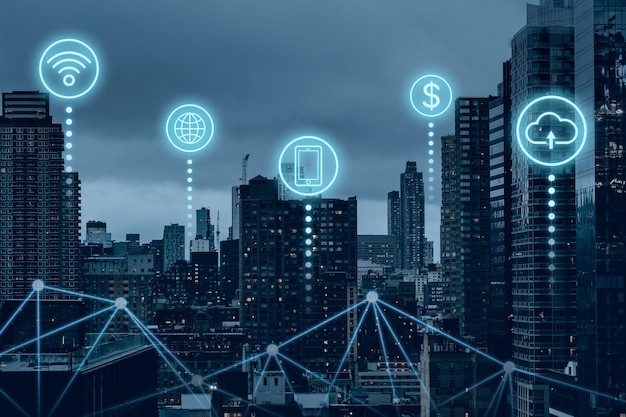In the modern business landscape, where everything is interconnected and reliant on data, understanding the basics of data cabling is essential. While it might seem like a technical subject, the core concept of data cabling is relatively straightforward. Let’s break it down and explore its significance for businesses.
A Simple Overview of Data Cabling
Imagine your business as a bustling city. Just as roads and highways connect different parts of a city, data cables connect various devices and systems within a business. These cables serve as pathways, ensuring that information can travel quickly and efficiently from one point to another.

Different Types of Data Cables
1. Twisted Pair Cables:
Consider these the most common roads in our city analogy. They’re reliable, cost-effective, and suitable for most everyday tasks. By twisting the wires together, they reduce the chances of interference, ensuring a smooth data flow.
2. Coaxial Cables:
Picture these as the wider highways designed for heavy traffic. They’re thicker and can handle more data, making them ideal for high-speed internet and cable TV services.
3. Fiber-Optic Cables:
These are like futuristic highways where information travels at the speed of light. Made of thin glass or plastic strands, they’re swift and can carry vast amounts of data over long distances.
How Data Cabling Works: A Simple Explanation
At its core, data cabling revolves around creating a network of pathways through which data can travel between devices within a system. Let’s dive into a simplified explanation of how data cabling works.
1. Transmission of Data
Data cabling operates on transmitting information from one point to another. When you send a file from your computer to a server or another device, the data travels through these cables, ensuring it reaches its intended destination.
2. Pathways for Information
Think of data cabling as the roads and highways in a city. As vehicles move on roads to different destinations, data packets move through cables to reach various devices. The cables act as dedicated pathways, ensuring data travels without interference or delays.
3. The Role of Connectors
Connectors play a crucial role in data cabling. They serve as the junctions where cables connect to devices like computers, servers, switches, and routers. These connectors ensure a secure and efficient data transfer, maintaining the information’s integrity.
Scalability and Expansion
As businesses grow, their data needs evolve. The beauty of data cabling lies in its scalability. Businesses can expand their network by adding cables or upgrading to faster ones, ensuring their infrastructure can support increasing data demands.
5. Integration with Network Devices
Data cabling doesn’t work in isolation. It integrates with various network devices like switches, routers, and modems. These devices help manage and direct data traffic, ensuring information flows smoothly and efficiently across the network.
Why Is Data Cabling Important for Businesses?
1. Reliability
Just as a city needs well-maintained roads for smooth traffic, businesses need reliable data cabling for consistent connectivity. With a robust cabling system, businesses can avoid interruptions and ensure operations run smoothly.
2. Flexibility and Growth
As businesses evolve and expand, their needs change. Proper data cabling allows flexibility, making it easier to adapt to new technologies and accommodate growth without significant overhauls.
3. Speed and Efficiency
Good data cabling ensures that data moves quickly and efficiently. Like upgrading from a narrow road to a highway, businesses with quality cabling can enjoy faster data transfers and better overall performance.
4. Security
In our analogy, well-lit and secure roads ensure safety. Similarly, a physical cabling system offers a more secure way to transmit data, reducing the risks associated with wireless vulnerabilities.
Critical Considerations for Data Cabling
Installing data cabling isn’t just about laying down cables; it’s a strategic process. Considerations such as building square footage, device count, and growth plans should be made by businesses. To get the most out of your cabling system and ensure it lasts as long as possible, it’s best to work with experts.
Conclusion
Data cabling, in its essence, is the backbone that supports modern businesses. It’s the infrastructure that allows information to flow seamlessly, enabling communication, innovation, and growth. Enterprise Systems offers tailored solutions to optimize this foundational aspect, ensuring businesses remain connected and efficient. Just as a city thrives with well-planned roads, businesses flourish with a well-designed data cabling system, paving the way for success in the digital age.


Recent Comments